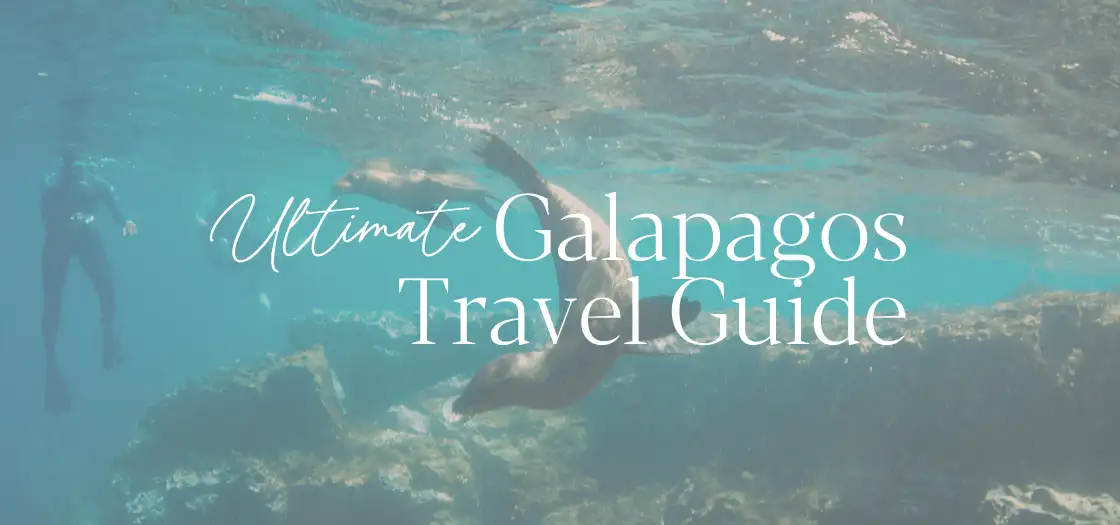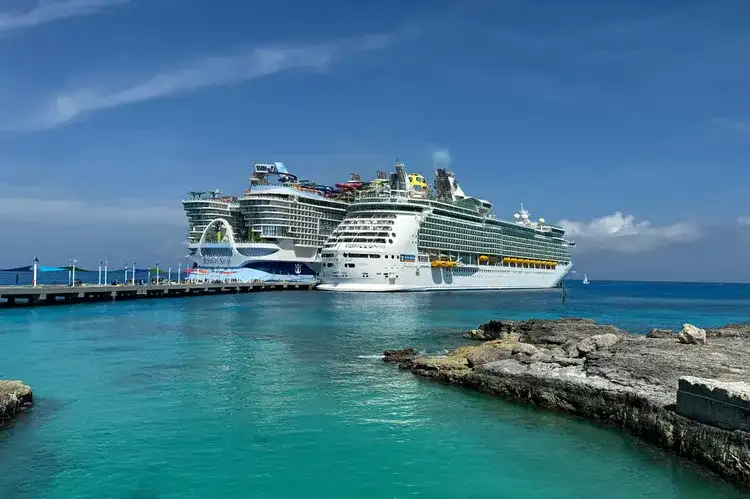Embark on a journey to the Galápagos Islands, an archipelago that has captivated explorers and nature enthusiasts alike. Located approximately 600 miles off Ecuador’s coast, these islands are a living museum of evolutionary biology, offering unparalleled encounters with unique wildlife and pristine landscapes.
Why Visit the Galápagos Islands?
The Galápagos Islands are a haven for biodiversity, hosting species found nowhere else on Earth. From the iconic giant tortoises to the playful blue-footed boobies, the wildlife here exhibits behaviors and adaptations that have intrigued scientists and travelers for centuries. Beyond wildlife observation, the islands boast stunning beaches, volcanic landscapes, and vibrant marine ecosystems, making them a dream destination for adventurers and honeymooners alike.
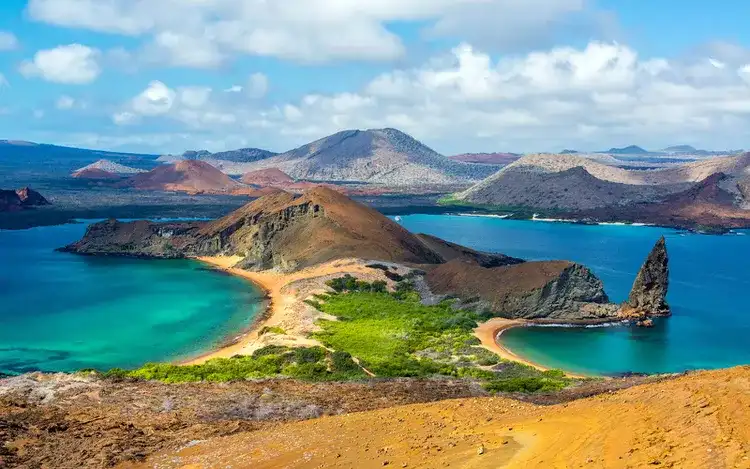
Unparalleled Wildlife Encounters
Visitors can snorkel alongside sea lions, observe marine iguanas basking on lava rocks, and witness the elaborate courtship dances of albatrosses. The lack of natural predators has resulted in fearless wildlife, allowing for intimate and memorable experiences.
Optimal Times to Visit
The Galápagos Islands offer unique experiences year-round, thanks to their equatorial location. However, understanding the seasonal variations can enhance your trip.
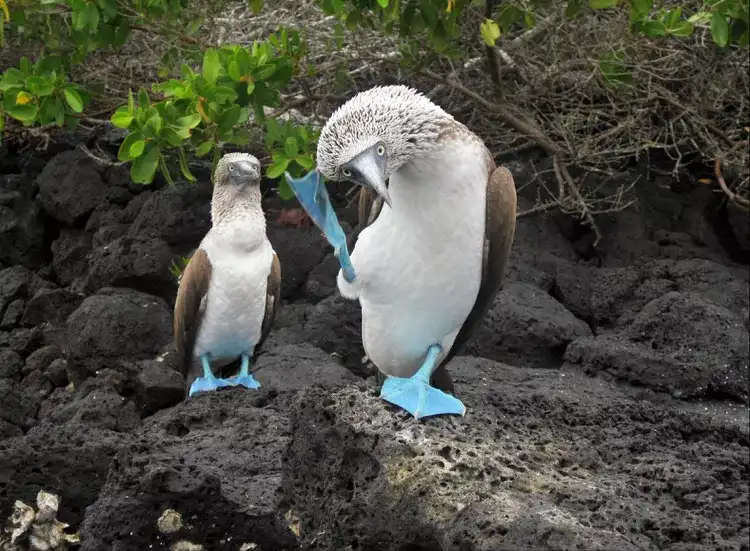
Warm Season (December to May)
Characterized by warmer temperatures and occasional rain showers, this season offers clear blue skies between showers, ideal for photography. The ocean is calmer and warmer, providing excellent conditions for snorkeling and swimming.
Cool Season (June to November)
Marked by cooler, drier weather with overcast skies and occasional light drizzle known as “garúa.” The nutrient-rich waters attract diverse marine life, making it a prime time for diving enthusiasts. A wetsuit is recommended for water activities during these months.

Getting There
Access to the Galápagos Islands is primarily via flights from mainland Ecuador, departing from Quito or Guayaquil. Flights land at one of two airports:
- Seymour Airport (Baltra Island): Serving as a gateway to Santa Cruz Island, accessible via a short ferry ride.
- San Cristóbal Airport (San Cristóbal Island): Convenient for exploring the eastern islands.
Ensure your flight aligns with your planned itinerary, as inter-island transportation can be limited.
Exploring the Islands: Land vs. Sea
Deciding between a land-based stay and a cruise is pivotal for your Galápagos experience. Each offers distinct advantages.
Land-Based Exploration
Staying in hotels on inhabited islands like Santa Cruz or San Cristóbal allows for flexible itineraries and immersion in local culture. Day trips to nearby islands are available, though travel times can be lengthy, and access to distant islands may be restricted.

Cruise-Based Exploration
Live-aboard cruises provide comprehensive access to multiple islands, often traveling overnight to maximize daytime exploration. While generally more expensive, cruises offer structured itineraries and the convenience of unpacking once.
Accommodation Options
Whether you choose a hotel stay or a cruise, the Galápagos offers a range of accommodations to suit various preferences and budgets.
- Hotels: Options range from boutique lodges to eco-friendly resorts. Notable examples include the Finch Bay Galapagos Hotel on Santa Cruz Island and the Golden Bay Galapagos on San Cristóbal Island.
- Cruises: Vessels vary from luxury yachts to budget-friendly boats, each offering different levels of comfort and amenities.
Activities and Attractions
The Galápagos Islands cater to a wide array of interests, ensuring a fulfilling experience for every traveler.
Wildlife Watching
Join guided tours to observe endemic species in their natural habitats. Highlights include the Charles Darwin Research Station and various designated visitor sites across the islands.

Snorkeling and Diving
Explore vibrant underwater ecosystems teeming with marine life. Popular spots like Devil’s Crown and Kicker Rock offer encounters with sharks, rays, and colorful fish.
Hiking and Exploration
Trek across volcanic landscapes, visit lava tunnels, and ascend viewpoints for panoramic vistas. Trails vary in difficulty, catering to both casual walkers and seasoned hikers.
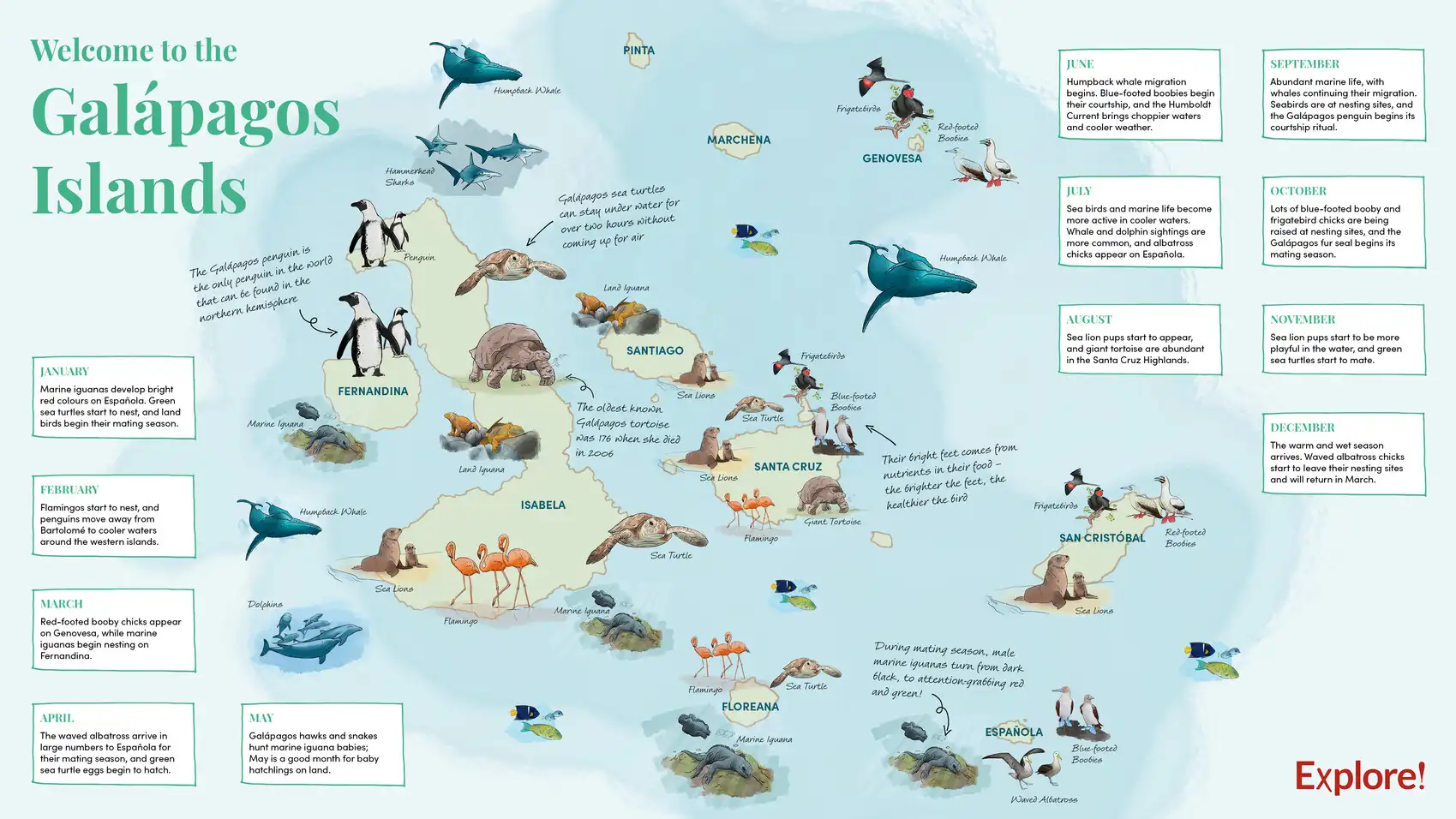
Essential Travel Tips
- Permits and Fees: Upon arrival, visitors must pay a Galápagos National Park entrance fee ($100 for adults, $50 for children) and obtain a Transit Control Card ($20), both payable in cash.
- Guided Tours: Exploration of most visitor sites requires accompaniment by certified naturalist guides to ensure environmental preservation.
- Health Precautions: The equatorial sun is intense; use high-SPF, reef-safe sunscreen, wear protective clothing, and stay hydrated. Motion sickness medication is advisable for boat journeys.
- Environmental Responsibility: Adhere strictly to park regulations, including maintaining a respectful distance from wildlife, refraining from feeding animals, and avoiding the introduction of foreign organisms.
Embarking on a journey to the Galápagos Islands is a transformative experience, offering profound insights into nature’s wonders. Thoughtful planning and respectful engagement with this delicate ecosystem will ensure an unforgettable adventure while contributing to the preservation of this unparalleled natural treasure.


